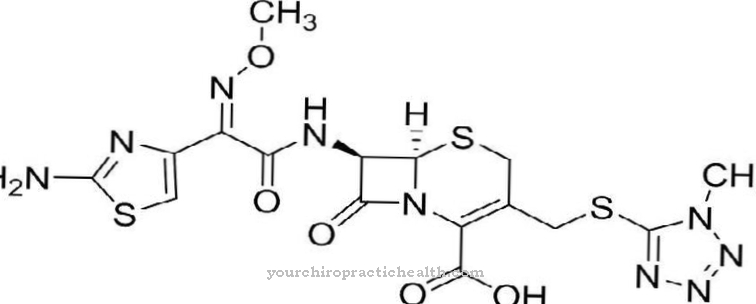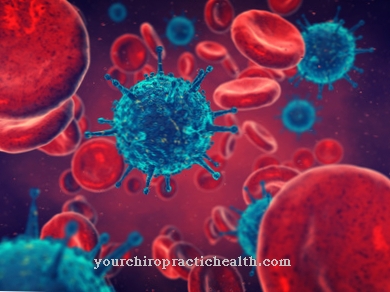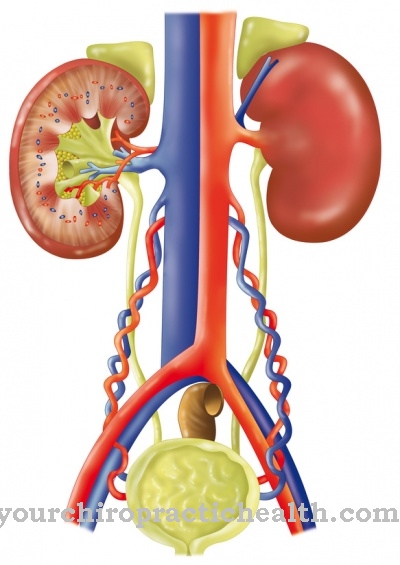Sevoflurane has a hypnotic and muscle relaxing effect. The drug is therefore used in anesthesia before surgery. Sevoflurane is inhaled through a mask and puts the patient in a state of general anesthesia. The medication is individually tailored to the patient and strictly monitored by medical professionals. Sevoflurane can cause side effects such as nausea, vomiting, headache and drowsiness.
What is Sevoflurane?
Sevoflurane is a so-called volatile anesthetic. Volatile anesthetics are drugs that are used by inhalation to induce or maintain anesthesia.
From a chemical point of view, sevoflurane belongs to the group of substances called hallways. Hallways are non-flammable and colorless. The odor of hallways is typically pungent. This is not the case with sevoflurane. It is therefore particularly suitable for introducing anesthesia through a mask.
The hallways also include desflurane, enflurane, isoflurane and methoxyflurane. Those of these active ingredients that are still commercially available are in liquid form. The trade name of Sevoflurane is Sevorane®.
Pharmacological effect on the body and organs
Sevoflurane has a muscle-relaxing and hypnotic effect. Muscle-relaxing drugs are substances that have a temporary, lasting relaxing effect on the skeletal muscles.
Sevoflurane is a so-called peripheral muscle relaxant. It works on the motor end plate of the muscle and thus prevents the muscle from being excited by the nerve fibers. The hypnotic effect of sevoflurane puts the person taking the drug into a state of complete numbness. Sevoflurane causes the consciousness and pain systems in the central nervous system to be switched off.
The exact mechanism of action of substances that trigger a narcotic state has not yet been fully clarified and is discussed controversially. Effects on a number of receptors in the central nervous system and on certain ion channels are described for the state of anesthesia.
Sevoflurane not only has a hypnotic and muscle relaxing effect, but also a weak analgesic effect. Analgesics are substances that are commonly referred to as pain relievers.
Medical application & use for treatment & prevention
Sevoflurane is a medicine used in medicine to put the patient under general anesthesia. It is commercially available in liquid form and is inhaled through a vapor mask. Patients lapse into a deep sleep after inhaling sevoflurane. The consciousness and the sensation of pain are switched off and the patient can be operated on.
In contrast to other flurans, sevoflurane has no corrosive effects on the mucous membranes. The smell is also pleasantly neutral. Therefore, the substance is particularly used in pediatric anesthesia. The drug should only be administered by healthcare professionals. They must be trained in the administration of the drug. It is also necessary that an anesthetist monitor the medication.
Sevoflurane must not be used if the patient is allergic to this substance and similar anesthetics. In addition, the drug must not be used if malignant hyperthermia is suspected. Malignant hyperthermia is a pathologically increased body temperature. This can lead to massive imbalances in metabolism and be life-threatening.
The dose of sevoflurane depends on body weight, height, age, gender and the type and estimated duration of the surgical procedure. The anesthetist monitors the patient's condition throughout therapy. He decides when the medication is finished.
You can find your medication here
➔ Medicines for painRisks & side effects
Like almost any medicine, sevoflurane can lead to undesirable side effects. Very common side effects are cough, nausea, vomiting, slow heartbeat, tremors, the urge to move around and low blood pressure. Drowsiness, drowsiness, fever, chills and respiratory diseases are relatively common.
Taking the drug may also lead to increased levels of liver function tests, white blood cells and glucose in the blood. Occasionally there are disturbances in the transmission of electrical stimuli at the AV node of the heart.
Other possible side effects such as liver inflammation, skin rash, itching, chest pain, inflammation of the skin, seizures, shortness of breath, hives, facial swelling and cardiac arrest cannot be ruled out.












.jpg)



.jpg)










.jpg)
